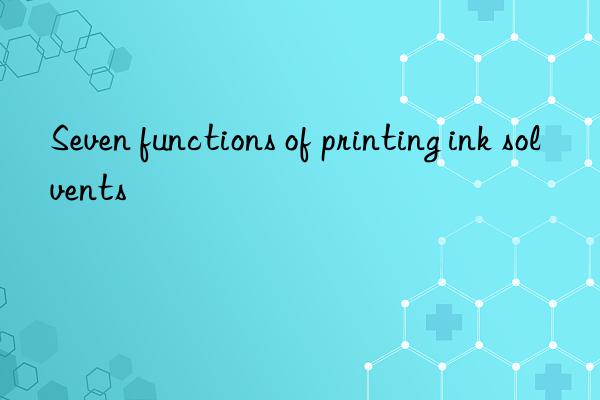
Solvent is an important component of gravure ink and flexographic ink, and is also an indispensable material in plastic film composite adhesives. It has solvent substances and its own ability to exert itself. Its volatilization speed is an important factor that determines the drying of the ink layer and the quality of volatile ink. Therefore, the selection and use of printing ink solvents is very important, and you should have a comprehensive understanding of the solvents used.
Functions of solvents
The ability to dissolve resin, organic solvents dissolve resin or additives, making the ink a uniform liquid, fluid, and able to Pigment dispersion helps the ink transfer from the plate to the printed material during printing, and also helps the ink's adhesion to the printed material.
Moisturizes and disperses the color, has good stability for the ink, and has good color stability. There are no adverse effects on hue changes, tinting strength, printing, color distribution, precipitation, agglomeration, etc.
The ability to adjust viscosity. Organic solvents are low-viscosity liquids that are added to the ink. , can reduce its viscosity, therefore, the optimal viscosity value can be adjusted according to the printing speed and plate depth in order to achieve the best effect.
Printing ink solvent
The ability to adjust the drying depth. In gravure printing, according to the printing depth and drying ability , climate conditions, pattern area size, etc., the drying depth of the ink can be adjusted to meet the ideal requirements. Normally, standard solvents can be used to adjust it. However, due to different conditions, sometimes you cannot only use standard solvents, but must use fast-drying solvents or slow-drying solvents to meet the requirements. The main features of the diluent are its ability to adjust the drying speed and its ability to dissolve resin.
Improves the infiltration of ink into the printed material. The surface of the printed film is also very difficult to be infiltrated by gravure ink, which hinders the transfer of ink and damages the printing effect. , the printing fastness is also not good. If an organic statistic with a surface tension similar to that of the printed material is used, the wetting of the ink onto its surface can be improved, helping to overcome the above shortcomings.
The solubility or penetration of printed materials, such as polyvinyl chloride, which can be dissolved in organic solvents, because the solvent in the ink has an impact on the surface A certain amount of dissolution can improve the adhesion and improve the printing fastness. Even insoluble films. Such as ethylene, polypropylene, polyester, etc., due to the expansion of the solvent, its affinity with the solvent can increase the bonding force. Therefore, when manufacturing ink, if the designed solvent has no affinity for the film, excellent printing fastness will never be obtained.
During printing operations, in terms of labor hygiene, you must be very careful about the smell of residual solvents, fires caused by flash points, toxicity, etc. Regulations regarding exhaust emissions should also be observed.

 微信扫一扫打赏
微信扫一扫打赏

